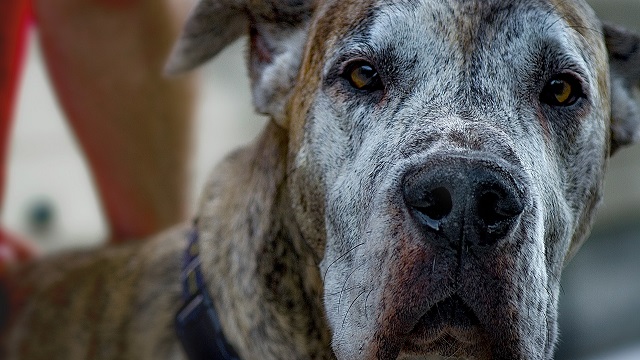You may not be familiar with “Dirofilariasis”, but there’s a different term that will probably ring a bell. Heartworm disease in dogs and cats is a serious condition. Caused by a parasite called Dirofilaria immitis, this chronic illness affects a variety of mammals (dogs, cats, ferrets, wolves, foxes….) It attacks the heart, lung and blood vessels and is potentially fatal.
Dogs are one of the parasite’s favourite hosts, since they provide optimal conditions for dirofilaria to thrive and develop into sexually mature adults that will then produce offspring (microfilarias). In cats, on the other hand, adult forms are unlikely to survive – but even immature ones may cause real damage! The microfilarias can then be transmitted to other animals via mosquitoes and the parasite’s life cycle goes on.
Signs of alarm

The first symptoms might be quite mild or even unnoticeable, but as the disease progresses they may become more obvious. A persistent cough, lack of appetite, weight loss and fatigue are the most common. In more advanced stages, the parasite load might be high enough to trigger fainting, collapses and ultimately heart failure.
The clinical importance of heartworm disease is amplified in cats due to their small body size, which causes even a small number of heartworms to be potentially life-threatening.
Prevention is the key, but be cautious

Misfortune is always around the corner and our buddies might actually get infected and struggle to overcome the illness… Which is precisely why prevention is highly recommended when we’re talking about heartworm disease in dogs and cats! Still, to assure it’s safely done, there are a few steps you should follow and discuss in advance with your vet or the Care team:
- If your dog or cat doesn’t have any record of past treatments/testing, it’s necessary to test their blood first;
- Cats may also benefit from chest x-rays or ultrasounds besides the usual blood test;
- All dogs should be tested annually, even when they are on an all-year-round prevention treatment;
- Only pets under 7 months old might be given preventive medication without being tested – still, they’ll have to be assessed later on to check if they are infected or not.
There are different drugs available to achieve optimal prevention. The chosen one must be officially approved and may be administered monthly (either orally or topically), or every 6 months (parenterally). If you’re in the US, you’ll need a prescription, but since every pet needs to be previously checked by their vet, this won’t be an issue.
Be aware that the preventive schedule devised for your buddy should be strictly followed, as it takes into consideration the parasite’s growth rhythm and risk of infection.
In addition to the usual meds, avoid any risky behaviours like letting your pet outside during the mosquitoes’ most active time. Apply a pet repellent that also covers mosquitoes.
My pooch is infected, what do I do?

Don’t panic! First, there are a few concerns that you should acknowledge. Generally speaking, mild infections are easily overcome and the more severe ones are usually successfully treated. Your vet will set a plan of attack according to the stage of the disease: they’ll probably start by confirming the diagnosis using another method, and stabilize your dog’s clinical status. Only then will they proceed with the actual treatment to kill the awful Dirofilaria immitis.
Sadly, it’s not that straightforward with cats

Regarding cats, the plus side is that some infections can go away on their own… But that doesn’t mean they won’t leave respiratory damage. Heartworms in the bloodstream also affect the immune system and even migrate to other parts of the body, like the brain or spinal cord. Diagnosis is more difficult to achieve in cats than in dogs, since felines usually have a small parasitic load. The main problem, though, lies in the fact that there’s no treatment available… So Dirofilariasis and prevention are two completely indissociable concepts when it comes to cats!
A worldwide concern, all year round

Heartworm infection is typically found in tropical and temperate regions of the world. It’s highly prevalent in the USA, South America, Japan, Australia and southern European countries – particularly Italy.
As previously mentioned, the transmission requires a mosquito bite. As we all know, climate changes – both natural and caused by humans – are enabling these insects to thrive in environments where they usually wouldn’t survive. In addition, globalization and the transportation and relocation of pets enhance a rapid increase in the disease’s spread.
Considering all of the above, the American Heartworm Society recommends giving your furry friend the heartworm preventive treatment all-year-round.
Heartworm disease in dogs and cats is dangerous. The preventives are usually highly effective, but there’s always a chance for your bestie to get infected. It’s important to keep track of their health status with regular blood tests, so that your vet can have all the information to detect and treat dirofilaria.
In the meantime, remember – if you have any doubts, you can always count on the Findster Care vet team!
If you haven’t read it yet, check out our article on Leishmaniosis in dogs and cats.






